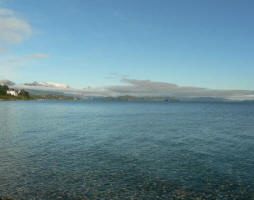 A Monitoring Tool for Resilience
A Monitoring Tool for Resilience
A Monitoring Tool for Resilience, Working Paper from the CGIAR program on Climate Change, Agriculture and Food Security.
Implicit in all development work is the quest for impact. Positively influencing livelihoods, landscapes and ecosystems is the goal of our work. Effecting such changes is known to require long-term, collaborative efforts, yet many development interventions take place within limited timeframes and scopes.
This is where many development practitioners are faced with a conundrum: how to measure results, and satisfy donors’ and funders’ demand for impact reporting, when the typical three-year development project has long expired by the time impacts emerge?
One group of researchers from the CGIAR Research Program on Water, Land and Ecosystems; the CGIAR Research Program on Climate Change, Agriculture and Food Security; and the CGIAR Research Program on Forests, Trees and Agroforestry set out to develop a tool that would allow for measuring results as far along the chain of change as possible, but that wouldn’t place significant additional monitoring or administrative burdens on the project manager.
Measuring resilience
They explored the concept of resilience in the context of agriculture, making the basic assumption that an improvement in ecosystem resilience equals impact and will ultimately yield an improvement in human well-being. The result is a recently published tool, which enables implementers of development interventions to track and monitor any changes in resilience.
Along with changes to ecosystem services, the tool proposes two other ‘categories’ of project outcomes that underpin farm-level resilience: increasing capacity of people to adapt and enhanced livelihoods and farm functioning.
Terry Hills, lead author of the publication detailing the tool, explains: “The hazards that test the resilience of a system - for example the sudden flood that destroys a farmer’s crop - is unlikely to be experienced during the lifetime of a project. What you need to measure are the factors that underpin resilience, such as people’s capacity to adapt. If your project outcomes have positive effects on these factors, then you can talk about having achieved impact.”
| Contact information |
Marianne Gadeberg
|
|---|---|
| News type | Inbrief |
| File link |
https://weadapt.org/knowledge-base/vulnerability/a-monitoring-instrument-for-resilience |
| Keyword(s) | Resilience |
| Subject(s) | AGRICULTURE , ANALYSIS AND TESTS , CHARACTERISTICAL PARAMETERS OF WATERS AND SLUDGES , DRINKING WATER , DRINKING WATER AND SANITATION : COMMON PROCESSES OF PURIFICATION AND TREATMENT , ENERGY , FINANCE-ECONOMY , HEALTH - HYGIENE - PATHOGENIC MICROORGANISM , HYDRAULICS - HYDROLOGY , INDUSTRY , INFORMATION - COMPUTER SCIENCES , INFRASTRUCTURES , MEASUREMENTS AND INSTRUMENTATION , METHTODOLOGY - STATISTICS - DECISION AID , NATURAL MEDIUM , POLICY-WATER POLICY AND WATER MANAGEMENT , PREVENTION AND NUISANCES POLLUTION , RIGHT , RISKS AND CLIMATOLOGY , SANITATION -STRICT PURIFICATION PROCESSES , SLUDGES , TOOL TERMS , TOURISM - SPORT - HOBBIES , WATER DEMAND , WATER QUALITY |
| Relation | https://static.weadapt.org/knowledge-base/files/1585/553546f28bff2resilience-instrument.pdf |
| Geographical coverage | n/a |
| News date | 03/06/2015 |
| Working language(s) | ENGLISH |
 you are not logged in
you are not logged in





